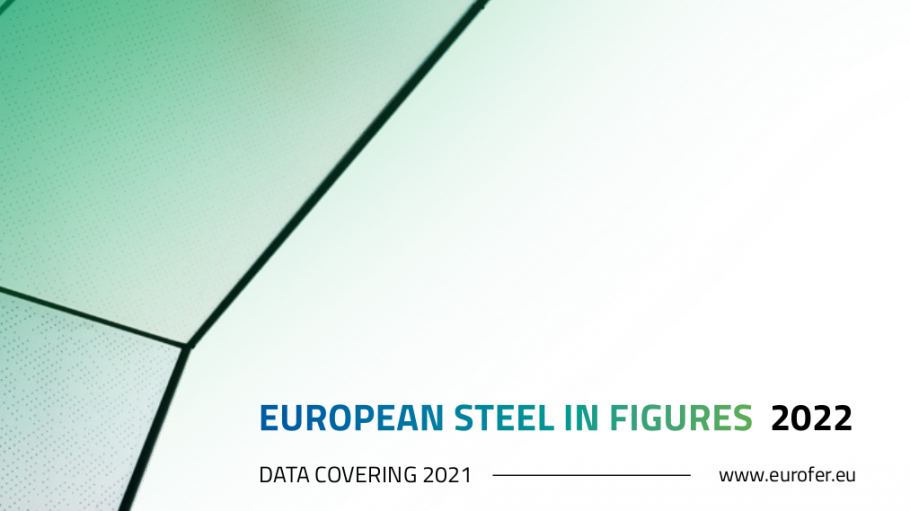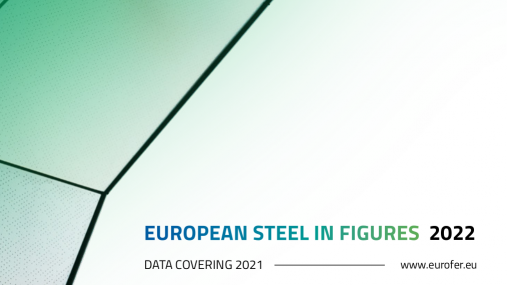
Publications » Brochures, booklets or fact-sheets » European Steel in Figures 2022
European Steel in Figures 2022
Downloads and links
Recent updates

European Steel in Figures 2022 is the fourteenth edition of the European Steel Association’s (EUROFER) statistical guide, which covers data up to 2021.
It is the first edition that takes fully into account the departure of the United Kingdom from the EU and its internal market. From now on, all aggregated data for the EU refer exclusively to EU27, and historical datasets have been adapted accordingly.
The numbers presented in the 2022 edition identify the main trends of the past year through data, and reflect both the new reality post Brexit and the consequences of the pandemic. In particular, they show the strong rebound experienced in the aftermath of restrictive COVID measures and the progressive slowdown of the recovery due to increasing supply chain disruptions, soaring energy prices and shortages of raw materials occurred in the second half of 2021.
We hope that our statistics will be of use for those working within and with the steel industry. We also hope that they can help guiding policymakers both at EU and national level in making the right choices when it comes to political decisions impacting the industry, such as climate, energy and trade policies.
We wish you a fruitful utilisation of European Steel in Figures 2022.

Download this publication or visit associated links
Strasbourg, 17 December 2025 – The European Commission’s latest proposals on the Carbon Border Adjustment Mechanism (CBAM), unveiled today, correctly identify several loopholes that risk undermining its effectiveness, notably regarding EU exports, downstream sectors and circumvention practices. However, despite these laudable efforts, the measures put forward fail to deliver a comprehensive and durable response to carbon and jobs leakage, warns the European Steel Association (EUROFER).
A milestone occasion to quickly and effectively restore affordable electricity, to relaunch the
decarbonization and strengthen the international competitiveness of the European steel
industry.
Brussels, 02 December 2025 – Unchanged negative conditions – U.S. tariffs and trade disruptions, economic and geopolitical tensions, protracted weak demand and still high energy prices – continue to weigh on the European steel market. EUROFER’s latest Economic and Steel Market Outlook confirms for 2025 another recession in both apparent steel consumption (-0.2%, unchanged) and steel-using sectors (-0.5%, revised from -0.7%). A potential recovery is expected only in 2026 for the Steel Weighted Industrial Production index (SWIP) (+1.8%, stable) and for apparent steel consumption (+3%, slightly revised from +3.1%) – although consumption volumes would still remain well below pre-pandemic levels. Steel imports retained historically high shares (27%), while exports plummeted (-9%) in the first eight months of 2025.